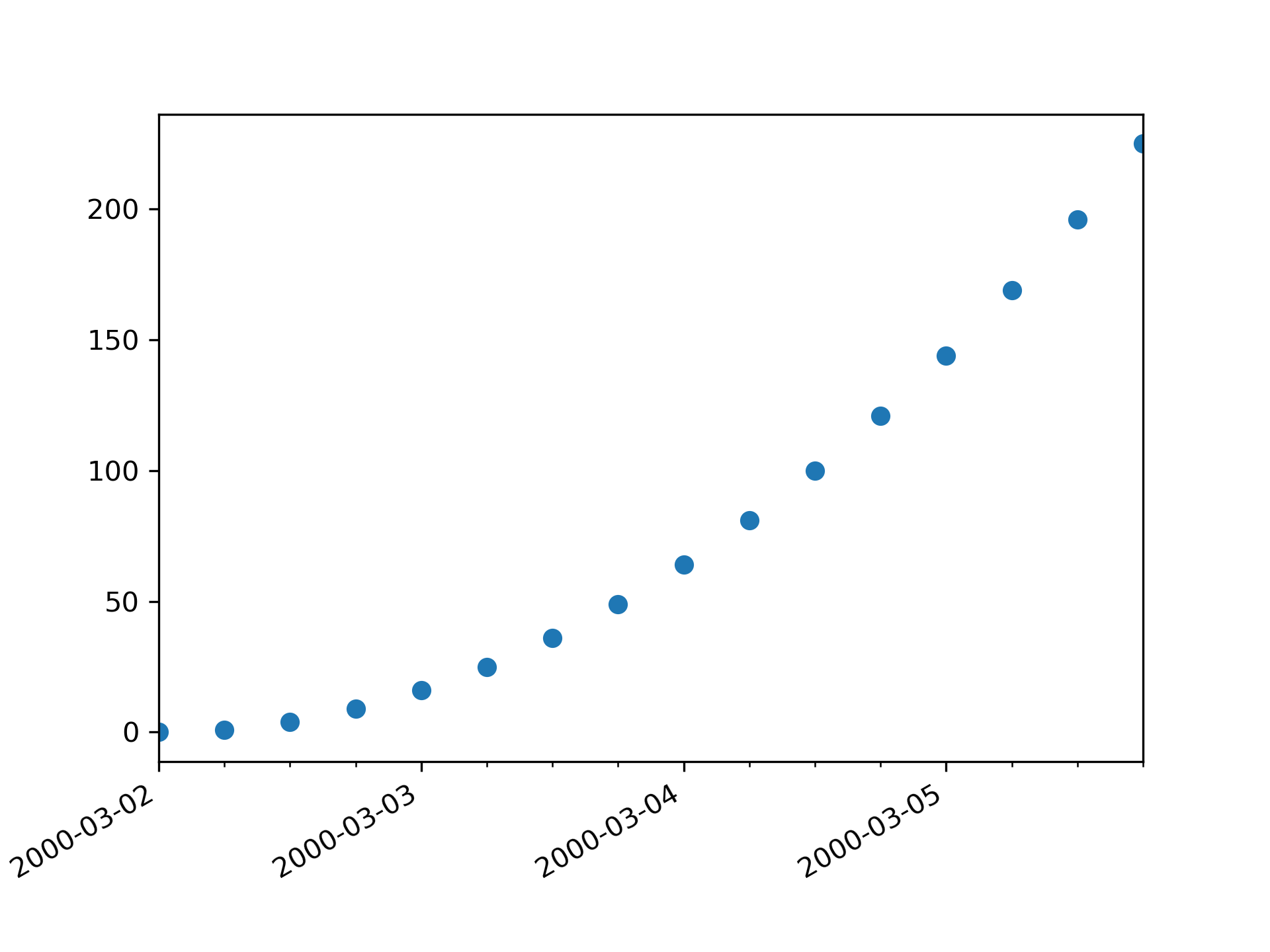>>> """
=================
Date Demo Convert
=================
"""
... import datetime
... import matplotlib.pyplot as plt
... from matplotlib.dates import DayLocator, HourLocator, DateFormatter, drange
... import numpy as np
...
... date1 = datetime.datetime(2000, 3, 2)
... date2 = datetime.datetime(2000, 3, 6)
... delta = datetime.timedelta(hours=6)
... dates = drange(date1, date2, delta)
...
... y = np.arange(len(dates))
...
... fig, ax = plt.subplots()
... ax.plot(dates, y**2, 'o')
...
... # this is superfluous, since the autoscaler should get it right, but
... # use date2num and num2date to convert between dates and floats if
... # you want; both date2num and num2date convert an instance or sequence
... ax.set_xlim(dates[0], dates[-1])
...
... # The hour locator takes the hour or sequence of hours you want to
... # tick, not the base multiple
...
... ax.xaxis.set_major_locator(DayLocator())
... ax.xaxis.set_minor_locator(HourLocator(range(0, 25, 6)))
... ax.xaxis.set_major_formatter(DateFormatter('%Y-%m-%d'))
...
... ax.fmt_xdata = DateFormatter('%Y-%m-%d %H:%M:%S')
... fig.autofmt_xdate()
...
... plt.show()
...

